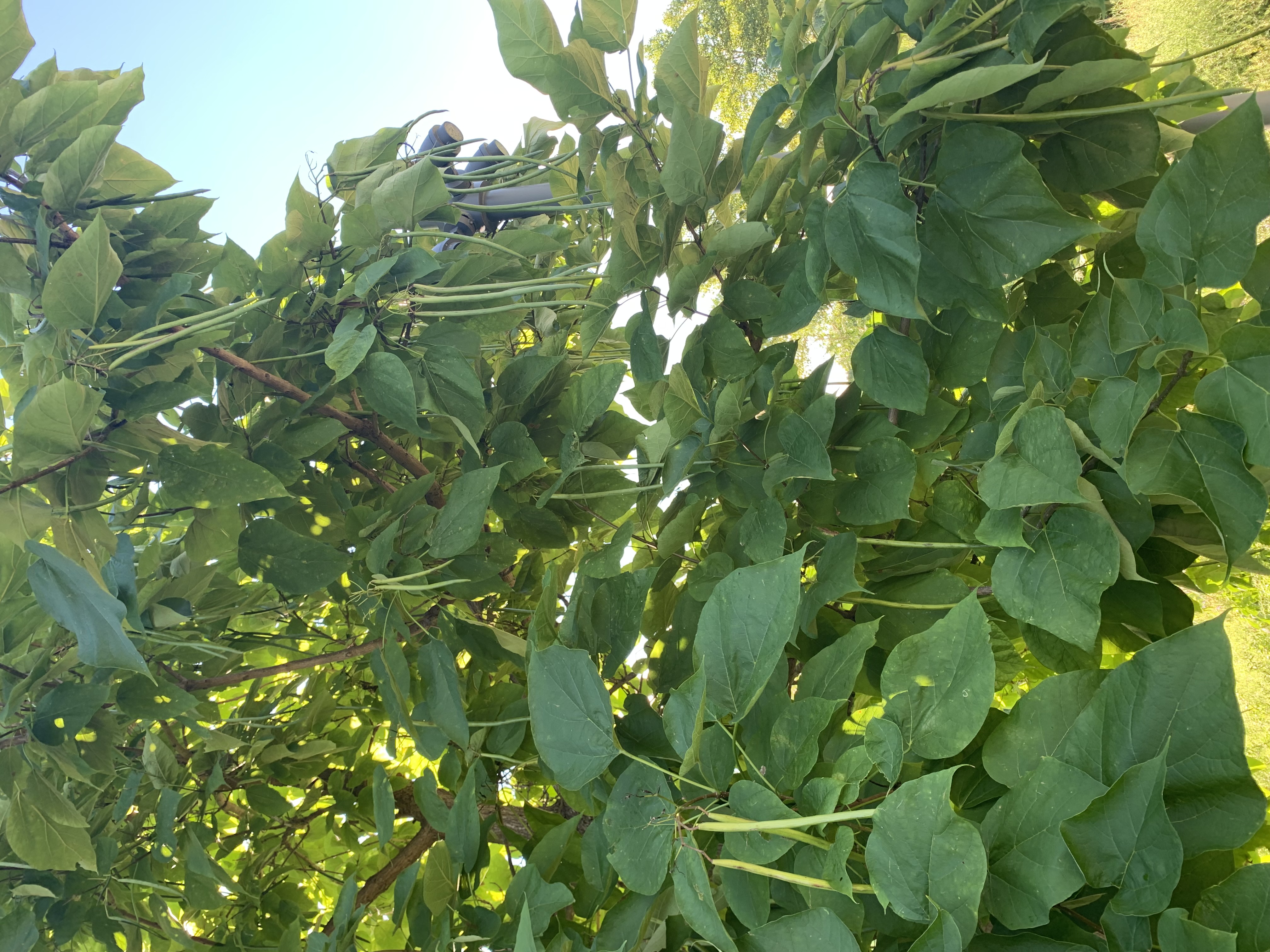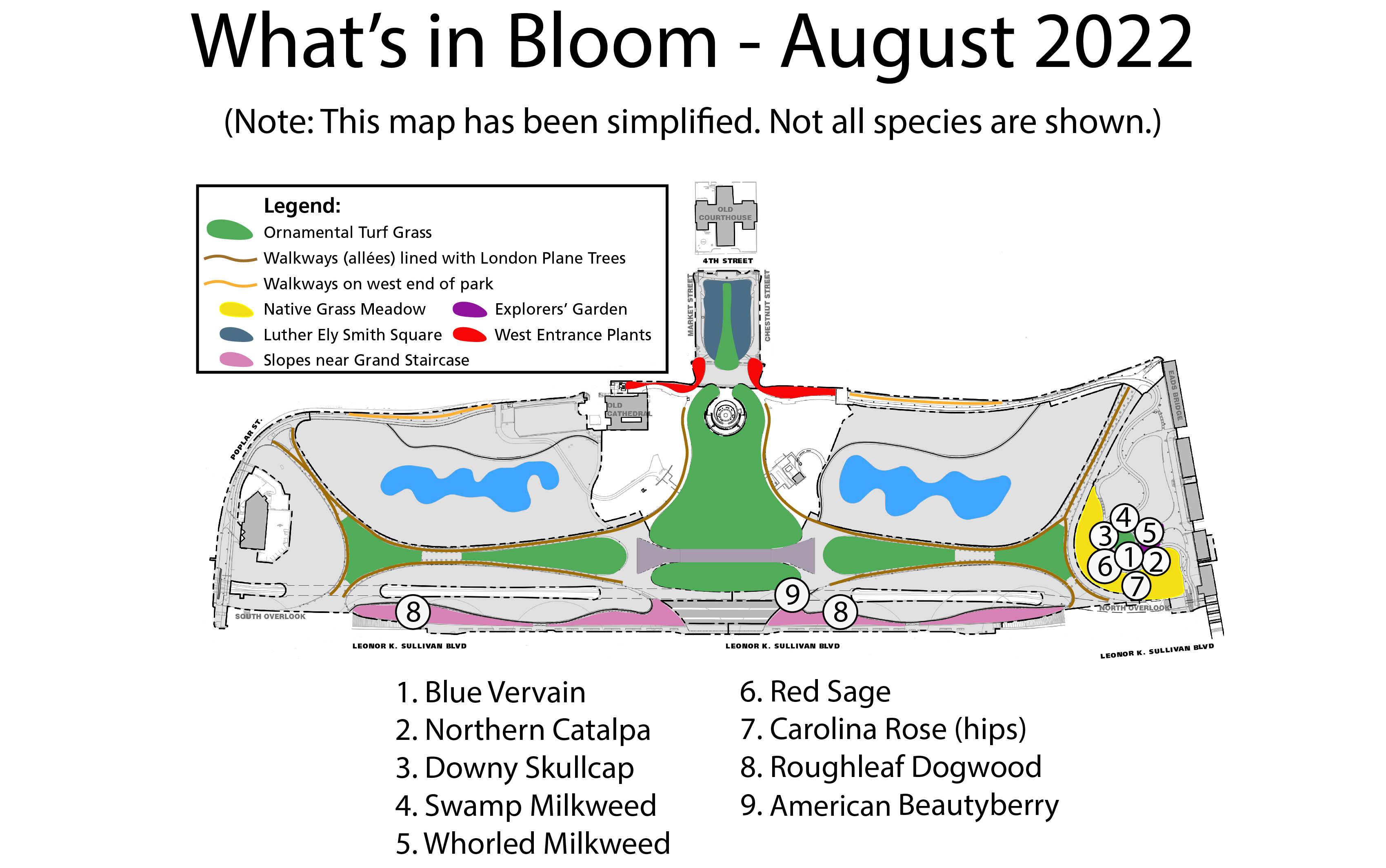
1. Blue Vervain, Verbena hastata. Blooming in the Explorers’ Garden.
We first mentioned Blue Vervain on the blog back in mid-June, and it’s still going strong!
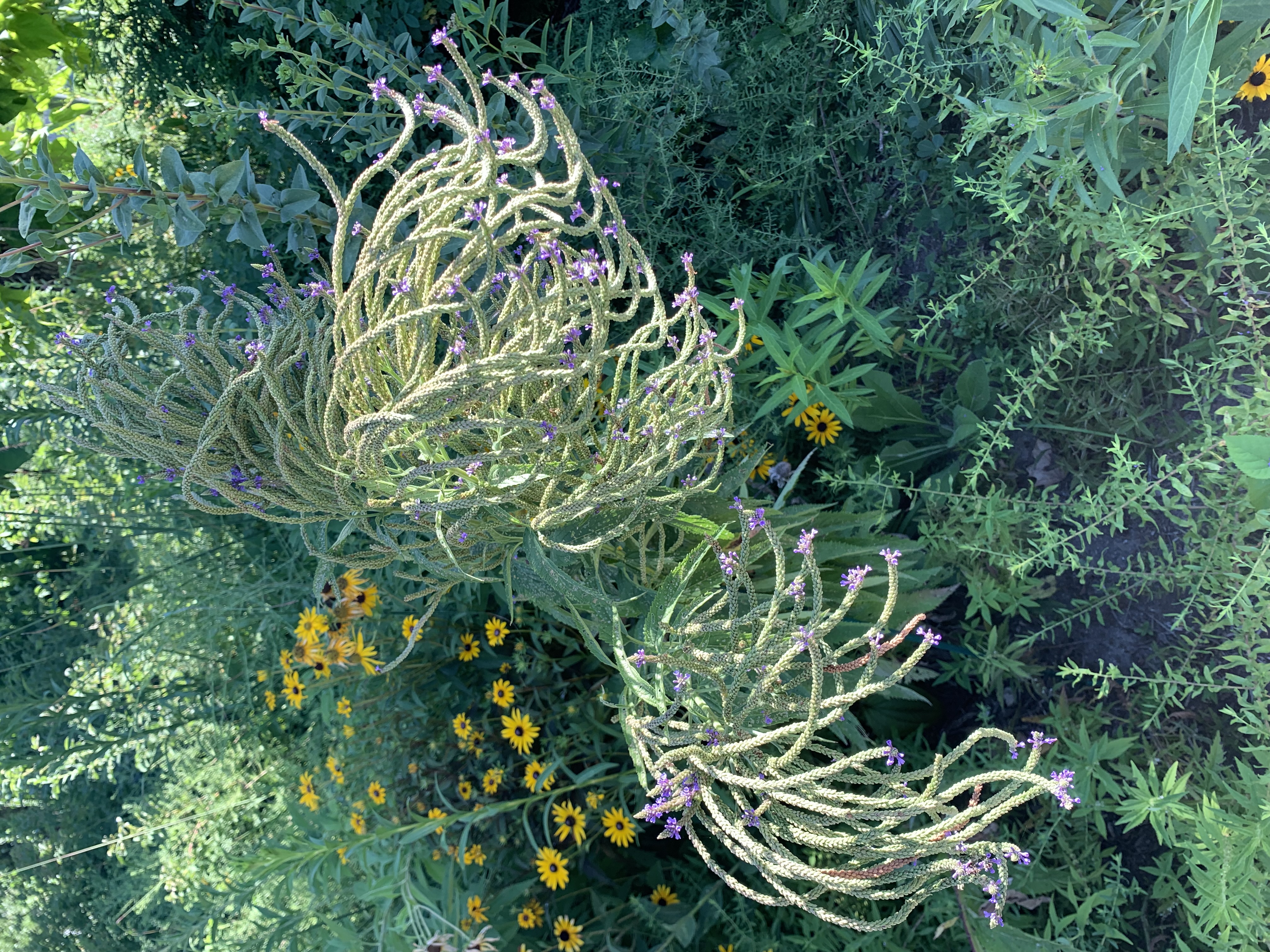 Some rangers describe it as the “Medusa flower.” NPS Photo.
Some rangers describe it as the “Medusa flower.” NPS Photo.
2. Northern catalpa, Catalpa speciosa. In the Explorers’ Garden.
Though the catalpas finished blooming months ago, they now have their distinctive long green bean-like seed pods. In the coming months, these pods will split open, revealing wispy feathery wind-blown seeds.
NPS Photo
3. Downy Skullcap, Scutellaria incana. Blooming in the Explorers’ Garden.
This species started blooming in early July and is still going strong.
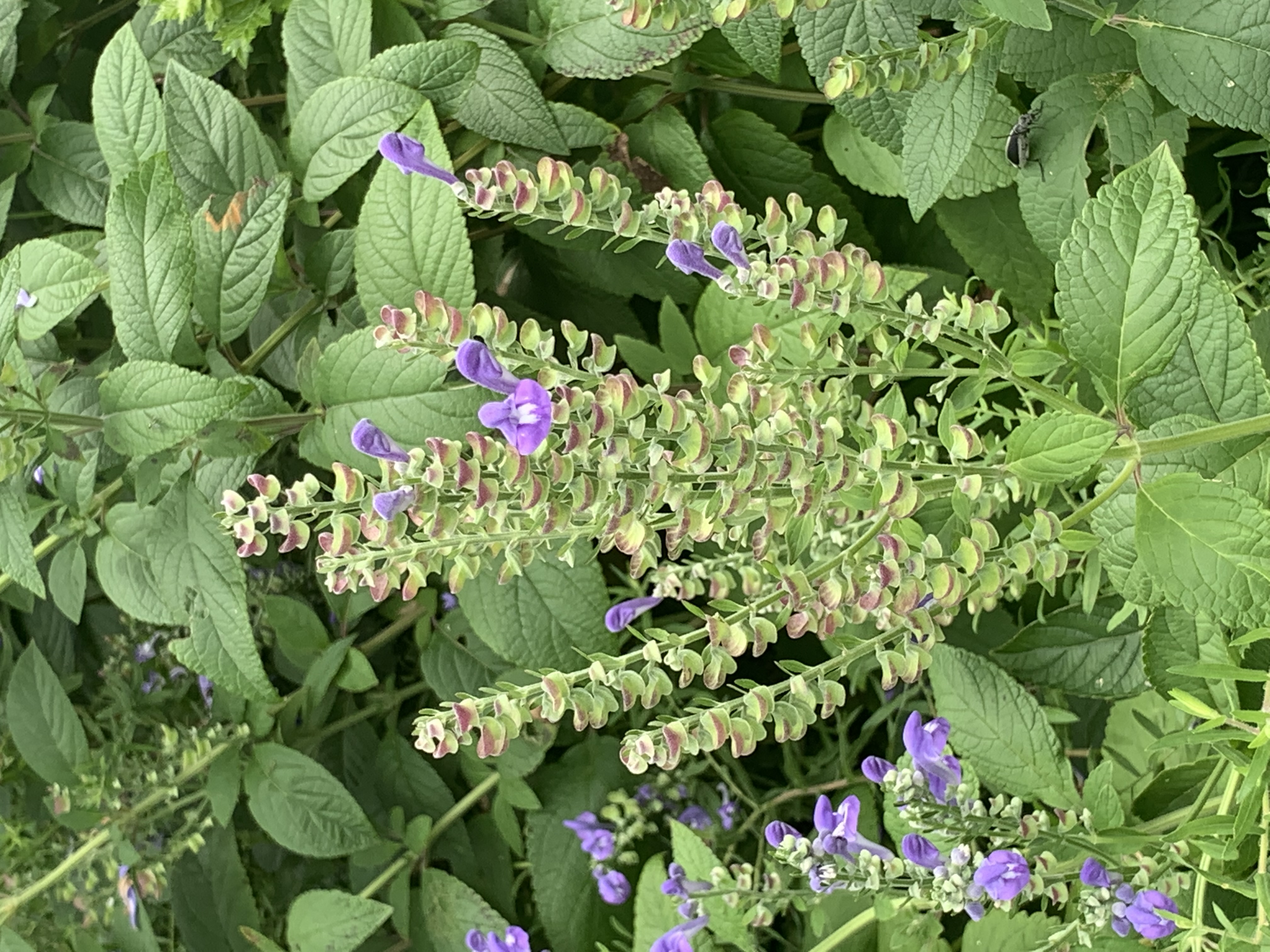
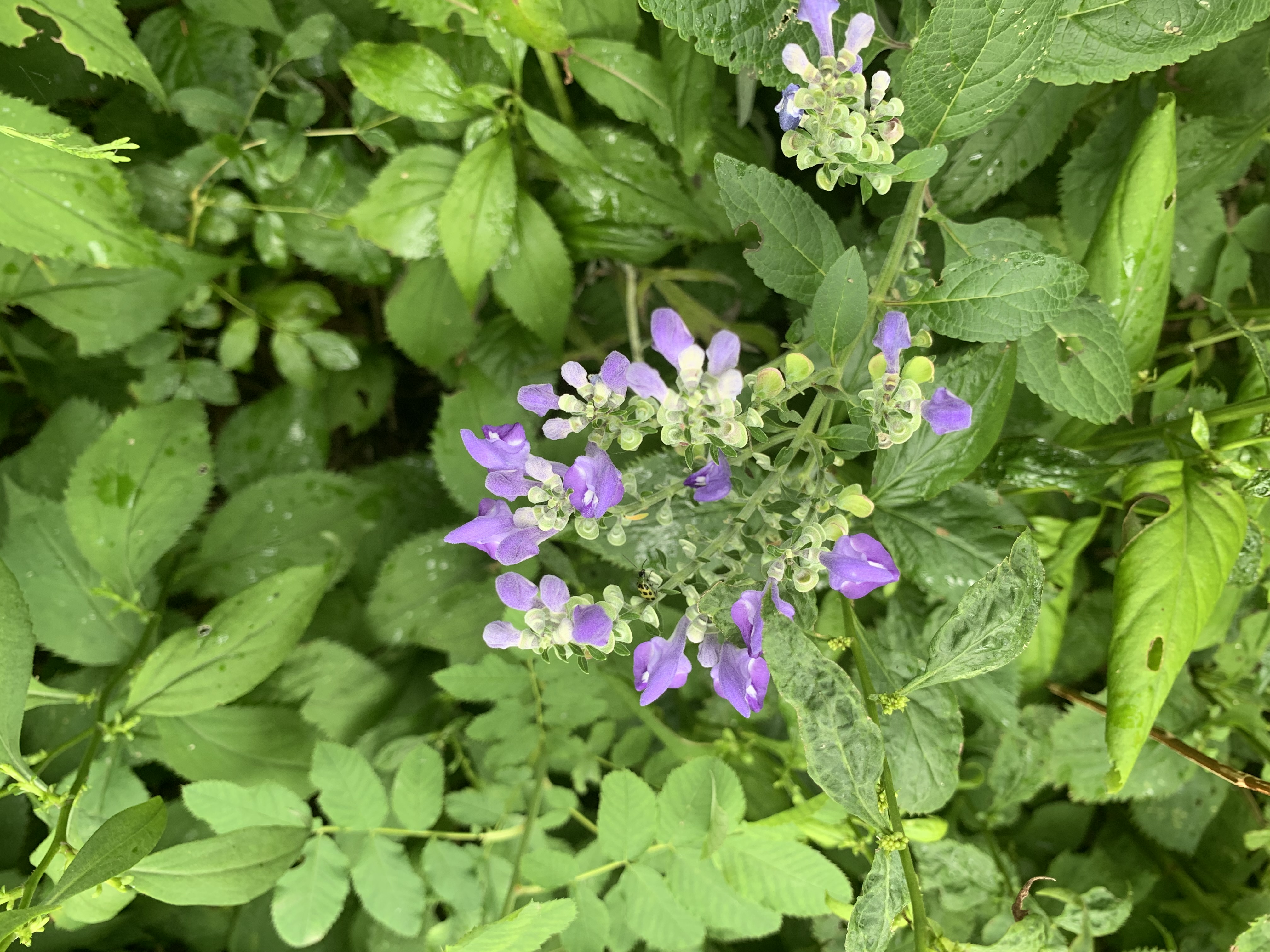
Some individual Downy skullcaps look more like the individual on the left, and some like the one on the right. NPS Photos.
5. and 6. Swamp Milkweed, Asclepias incarnata and Whorled milkweed, Asclepias verticillate. Both blooming in the Explorers’ Garden.
Swamp Milkweed and Whorled Milkweed haven’t been mentioned on the blog before, though their cousin common milkweed was featured in late June.
Like all milkweeds, these two are food sources for the caterpillar of the monarch butterfly. Monarch caterpillars eat milkweed and only milkweed, so maintaining healthy plantings of milkweed is essential to this species’ survival. Adult monarchs will also feast on the nectar from milkweed flowers. Both swamp and whorled milkweeds bloom later in the season than common milkweed does, which makes them good late-season host plants for monarch caterpillars.
Besides monarchs, many other species also use milkweeds, including various bees, moths, and wasps.
Like all milkweeds, Whorled and Swamp Milkweeds produce a viscous white sap when cut. They are toxic to many mammals, which makes them problematic in grazing areas.
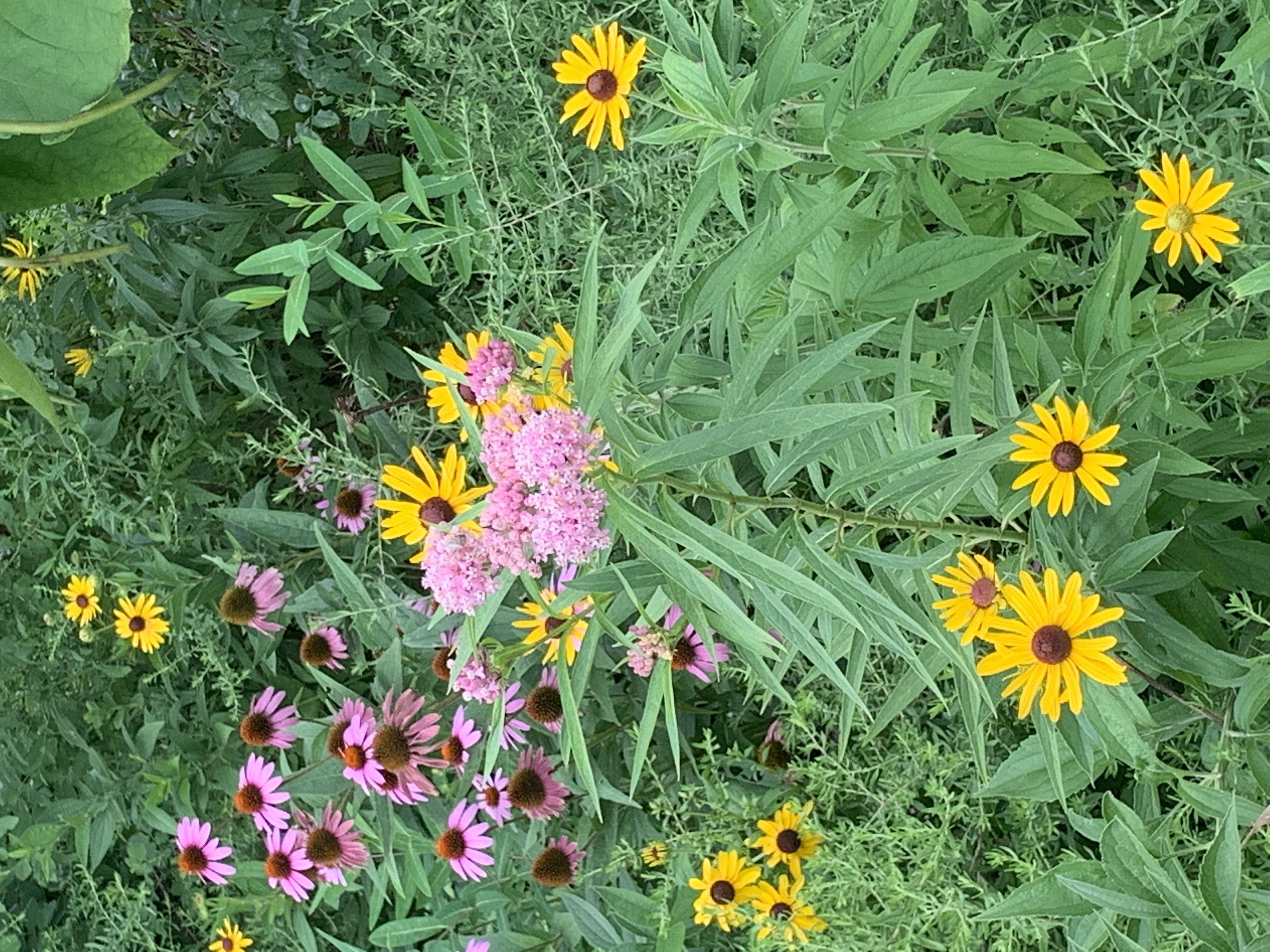
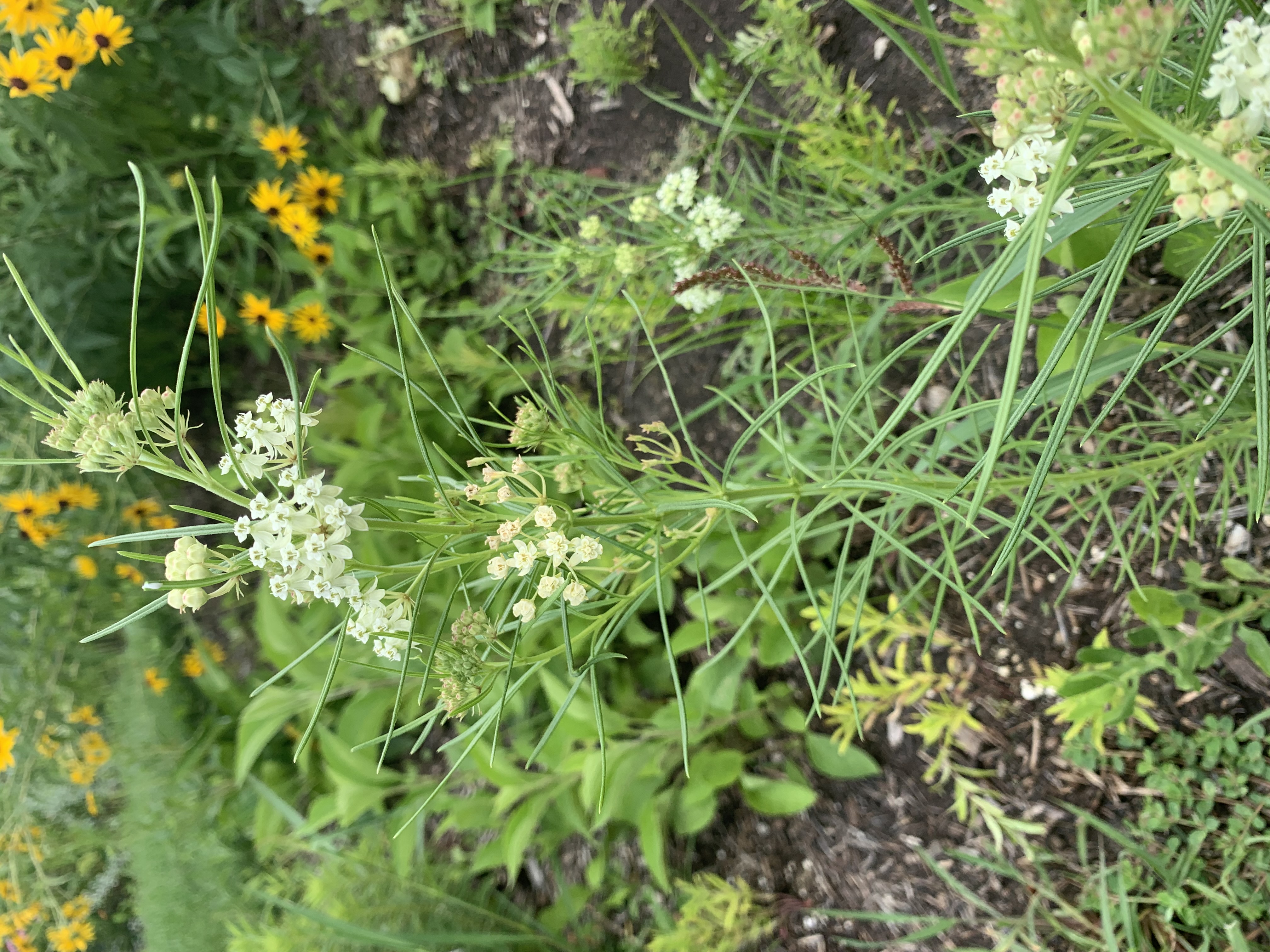
Left (pink flower): Swamp Milkweed. Right (white flower): Whorled Milkweed. Both photos: NPS.
6. Red sage, Salvia coccinea. Blooming in the Explorers' Garden.
A few Red Sages remain in the Explorers’ Garden. Their bright, vibrant red color makes them easy to find. They’ve been blooming since early July.
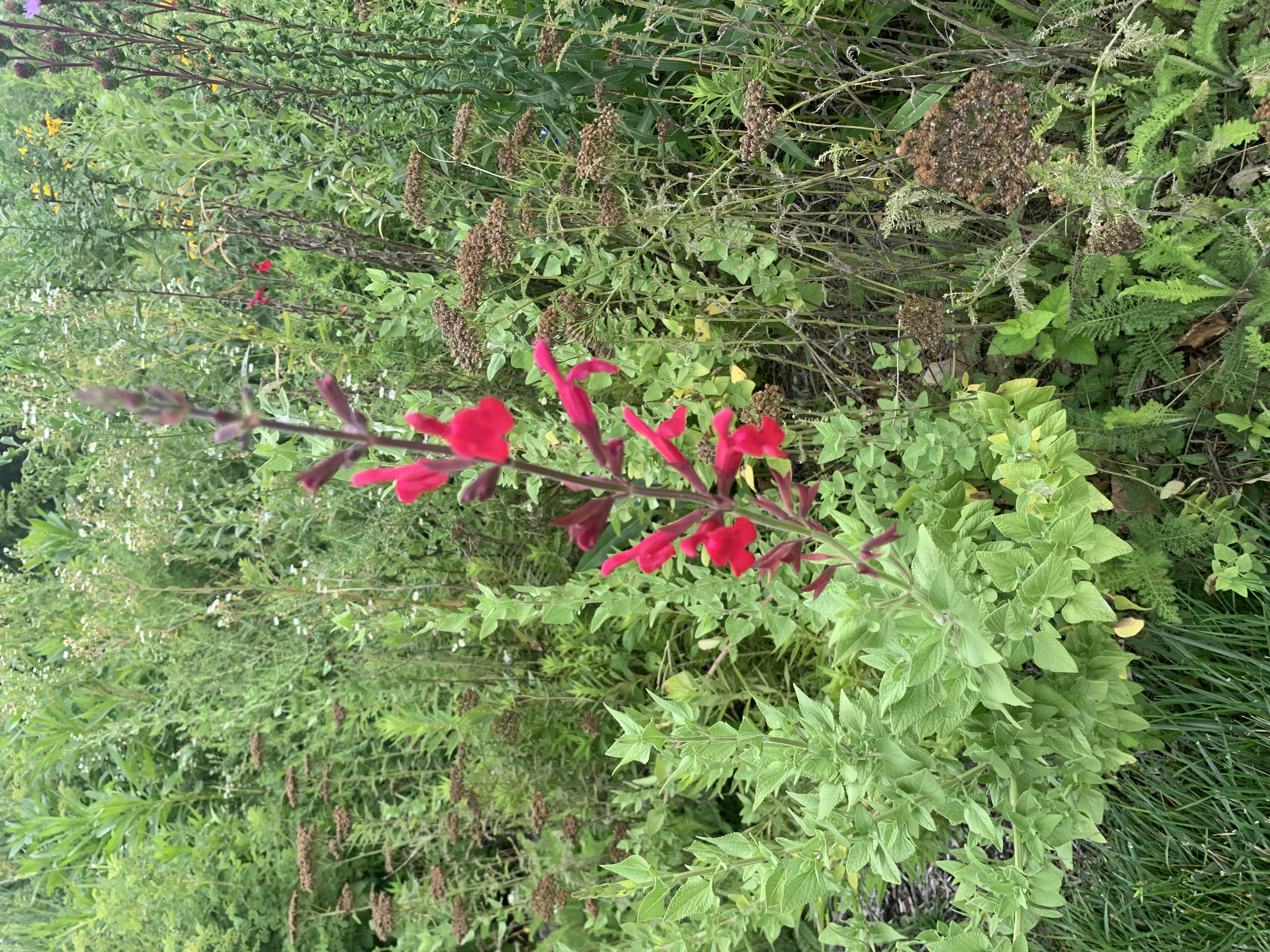 NPS Photo
NPS Photo
7. Carolina Rose, Rosa carolina. In the Explorers’ Garden.
These roses finished blooming long ago, and now they’ve produced their fruits. Most roses will produce fruits (called 'rose hips'), and most rose hips are edible both for humans and for wildlife.
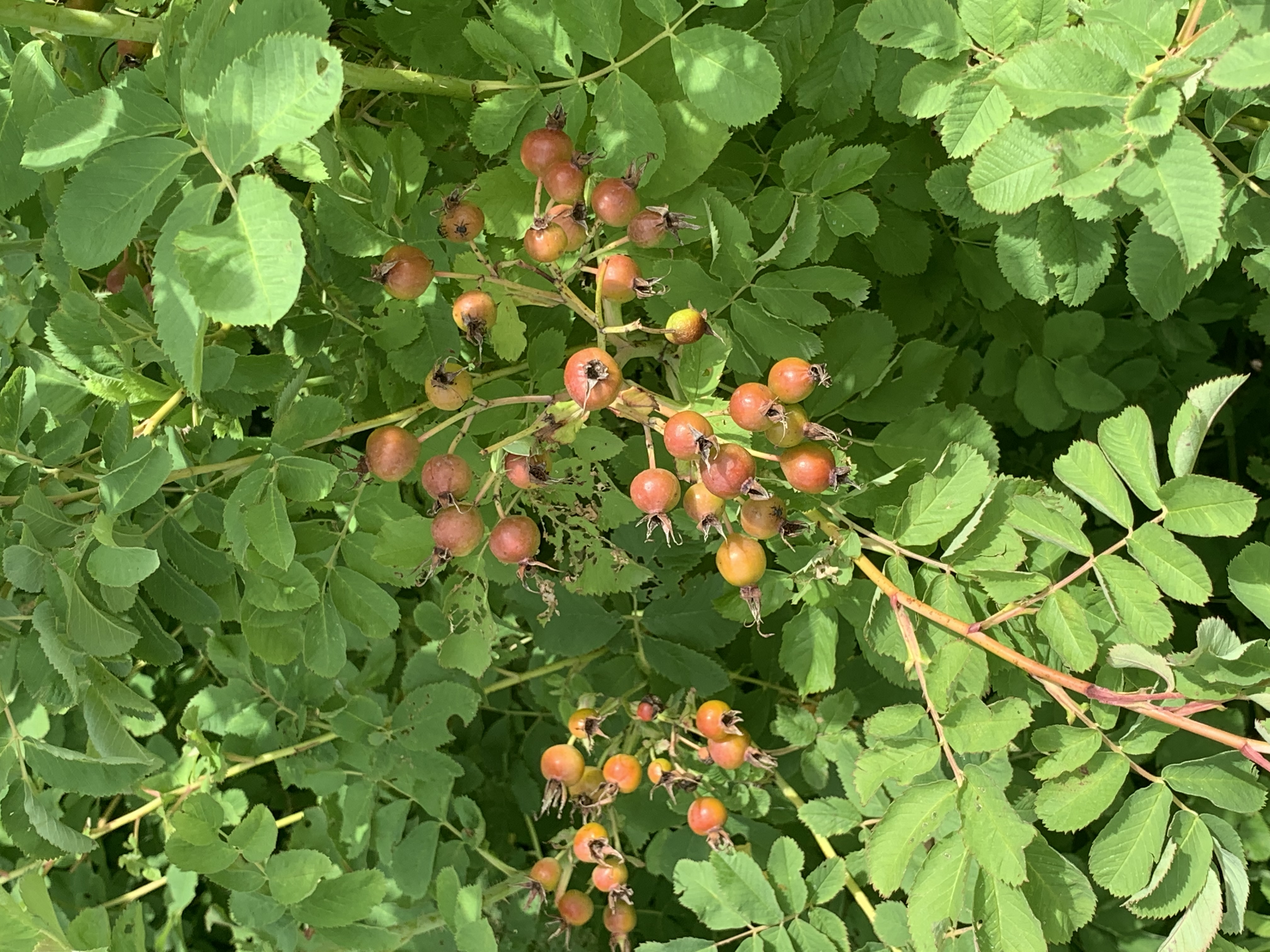 NPS Photo.
NPS Photo.
8. Roughleaf dogwood, Cornus drummondii. On each side of the Grand Staircase.
This species finished blooming in early June, but now it’s produced its fruits, which are almost as showy as its flowers. The small white fruits will be enjoyed through the winter by many birds, squirrels, and other small animals.
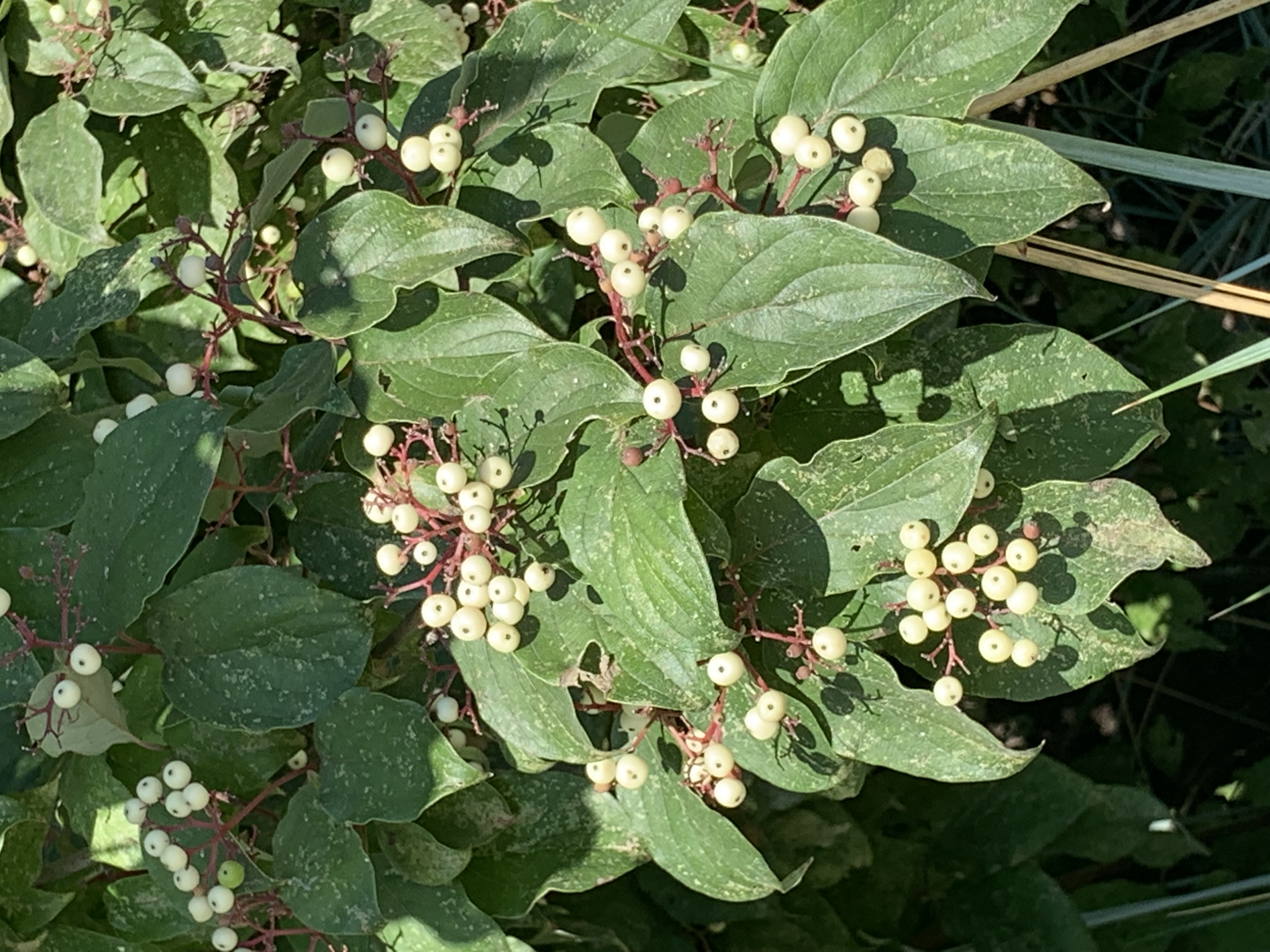 NPS Photo
NPS Photo
9. Beautyberry, Callicarpa americana. Blooming on the north side of the Grand Staircase.
We must have missed the blooms on this a few months ago, but the fruits are so showy they’re hard to miss. Beautyberry is native to the central and southeastern US, as well as tropical Bermuda. The berries are not considered edible to humans, but birds and small mammals love them. The fruits will likely be on the plant through October if our local wildlife don’t eat them up before then.


The beautyberries are very close to the North Leg of the Gateway Arch. NPS Photos.

